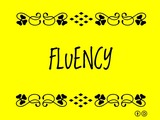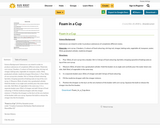
Description of blood through the heart
- Subject:
- Math
- Material Type:
- Activity/Lab
- Provider:
- Khan Academy
- Date Added:
- 10/10/2018

Description of blood through the heart

The purpose of this task is to give students practice working the formulas for the volume of cylinders, cones and spheres, in an engaging context that provides and opportunity to attach meaning to the answers.

Fluency Graphs

This resource explores:what fluency ishow we assess fluencyhow fluency progresseshow to choose text for independent readinghow to work on fluency with students through repeated reading

Today we’ll dive further into fluid flow and how we can use equipment to apply our skills. We explain Bernoulli’s Principle and the relationship between speed and pressure in certain flowing fluids. We’ll also discuss how to apply the principle with Bernoulli’s Equation and try to use it in real-world examples.

Students learn about the fundamental concepts important to fluid power, which includes both pneumatic (gas) and hydraulic (liquid) systems. Both systems contain four basic components: reservoir/receiver, pump/compressor, valve, cylinder. Students learn background information about fluid power—both pneumatic and hydraulic systems—including everyday applications in our world (bulldozers, front-end loaders, excavators, chair height lever adjustors, door closer dampers, dental drills, vehicle brakes) and related natural laws. After a few simple teacher demos, they learn about the four components in all fluid power systems, watch two 26-minute online videos about fluid power, complete a crossword puzzle of fluid power terms, and conduct a task card exercise. This prepares them to conduct the associated hands-on activity, using the Portable Fluid Power Demonstrator (teacher-prepared kits) to learn more about the properties of gases and liquids in addition to how forces are transmitted and multiplied within these systems.

Students will design and build a machine to lift "barrels" of volatile chemicals from a "dangerous" spill area to a "safe" area.

The purpose of this problem is to have students compose functions using tables of values only.

FlyLab JS is an educational application for learning the principles of genetic inheritance. Users design crosses between female and male fruit flies carrying one or more genetic mutations. They can make hypotheses for the mode of inheritance of genetic traits and test their hypotheses by selecting fruit flies with different visible mutations, mating them, and analyzing the phenotypic ratios of the offspring. Results can be recorded into an online notebook which can be exported as a web page for later use.
With FlyLab JS, it is possible to study multiple generations of offspring, and perform testcrosses and backcrosses. FlyLab JS is a versatile program; it can be used to learn elementary genetic principles such as dominance and recessive alleles, and Mendelian ratios, or more complex concepts such as sex-linkage, epistasis, recombination, and genetic mapping.

During this engineering design/build project, students investigate many different solutions to a problem. Their design challenge is to find a way to get school t-shirts up into the stands during home sporting events. They follow the steps of the engineering design process to design and build a usable model, all while keeping costs under budget.

During the associated lesson, students have learned about Newton's three laws of motion and free-body diagrams and have identified the forces of thrust, drag and gravity. As students begin to understand the physics behind thrust, drag and gravity and how these relate these to Newton's three laws of motion, groups assemble and launch the rockets that they designed in the associated lesson. The height of the rockets, after constructed and launched, are measured and compared to the theoretical values calculated during the rocket lesson. Effective teamwork and attention to detail is key for successful launches.

This portal is offered as a free resource to help facilitate online reading instruction and learning during this challenging time of school closures due to the Coronavirus outbreak.
These resources were available as of September 8th, 2020. If you try to access them later and they are not available, please let melissa.lander@sunwestsd.ca know.
There are two areas of the site, one for Students and one for Instructors. Materials are organized by our Phonics Scope and Sequence, and can be quickly navigated using the Menu at the top of the page.

Science Background:
Substances can mixed in order to produce substances of completely different states.
Materials: corn syrup, 2 beakers, 2 colours of food colouring, stirring rod, vinegar, baking soda, vegetable oil, teaspoon, water, 50mL graduated cylinder, medicine dropper
Directions:
1. Pour 30mL of corn syrup into a beaker. Stir in 3 drops of food colouring. Sprinkle a heaping spoonful of baking soda on top of the corn syrup.
2. Measure 30mL of water into a graduated cylinder. Hold the beaker at an angle and carefully pour the water down one side. Add 30mL of vegetable in the same way.
3. In a separate beaker pour 20mL of vinegar and add 3 drops of food colouring.
4. Fill the medicine dropper with the vinegar mixture.
5. Position the dropper so the tip is at the very bottom of the beaker with corn syrup. Squeeze the bulb to release the vinegar into the first beaker.

An interactive applet and associated web page that show the definition and properties of the focus points (foci) of an ellipse. The applet has an ellipse whose major and minor axes can be dragged. The applet shows the location of the foci, which are always on the major axis, and shows how they move with variation of the axis lengths. The web page also has a formula for calculating the location of the foci. Applet can be enlarged to full screen size for use with a classroom projector. This resource is a component of the Math Open Reference Interactive Geometry textbook project at http://www.mathopenref.com.

Students will learn about succession by studying the reestablishment of ecological communities following the 1980 volcanic eruption of Mount St. Helens and by setting up experimental plots to observe successional changes over time.

"A new tool for anyone seeking to improve their ability to focus."
Users progress through timed steps, with self-regulation activities embedded in their progression.
This tool can also be used with groups to encourage better focus.
Focusable is free - but there is also an upgraded version available.

"This guide is intended to support teachers’ ongoing efforts in building students’ knowledge and skills in mathematics. It focuses attention on the content of expectations in The Ontario Curriculum, Grades 1–8: Mathematics, 2005 that deal with fundamental mathematics concepts and skills (specifically, expectations in the Number Sense and Numeration strand and expectations that relate to number properties in the Patterning and Algebra strand). The guide outlines steps to achieving the knowledge and skills described in these expectations and suggests how to make more timely connections that will better support student learning. A strong foundation in the concepts and skills emphasized here will prepare students for success in high school, and ensure that they have a set of essential skills for employment and responsible citizenship in the future."
There are excellent charts included that organize foundational skills by grade grouping. These charts start on page 5.

Students come to understand the basics of engineering associated with the use, selection, and properties of fabrics. A wide variety of natural and synthetic fibers are used in our clothing, home furnishings and in our travel and sports equipment. The specific material chosen for each application depends on how closely the properties of the material match the design needs. This activity focuses on the different characteristics of fabrics and shows students how natural and synthetic fabrics differ from one another. Students weigh the advantages and disadvantages of fabrics when considering the appropriate fabric to be used.

This is a lesson about Saturn. Learners will create a multilayered book with diagrams of Saturn showing its various layers, ring system, and many moons. To enhance background information on Saturn, students will practice listening to informational text. Students will also create their own texts to support and explain their Saturn diagrams. This is lesson 9 of 10 in "Reading, Writing & Rings," for grades 1-2.

The purpose of this task is to provide students with a concrete experience they can relate to fraction multiplication. Perhaps more importantly, the task also purposefully relates length and locations of points on a number line, a common trouble spot for students. This task is meant for instruction and would be a useful as part of an introductory unit on fraction multiplication.